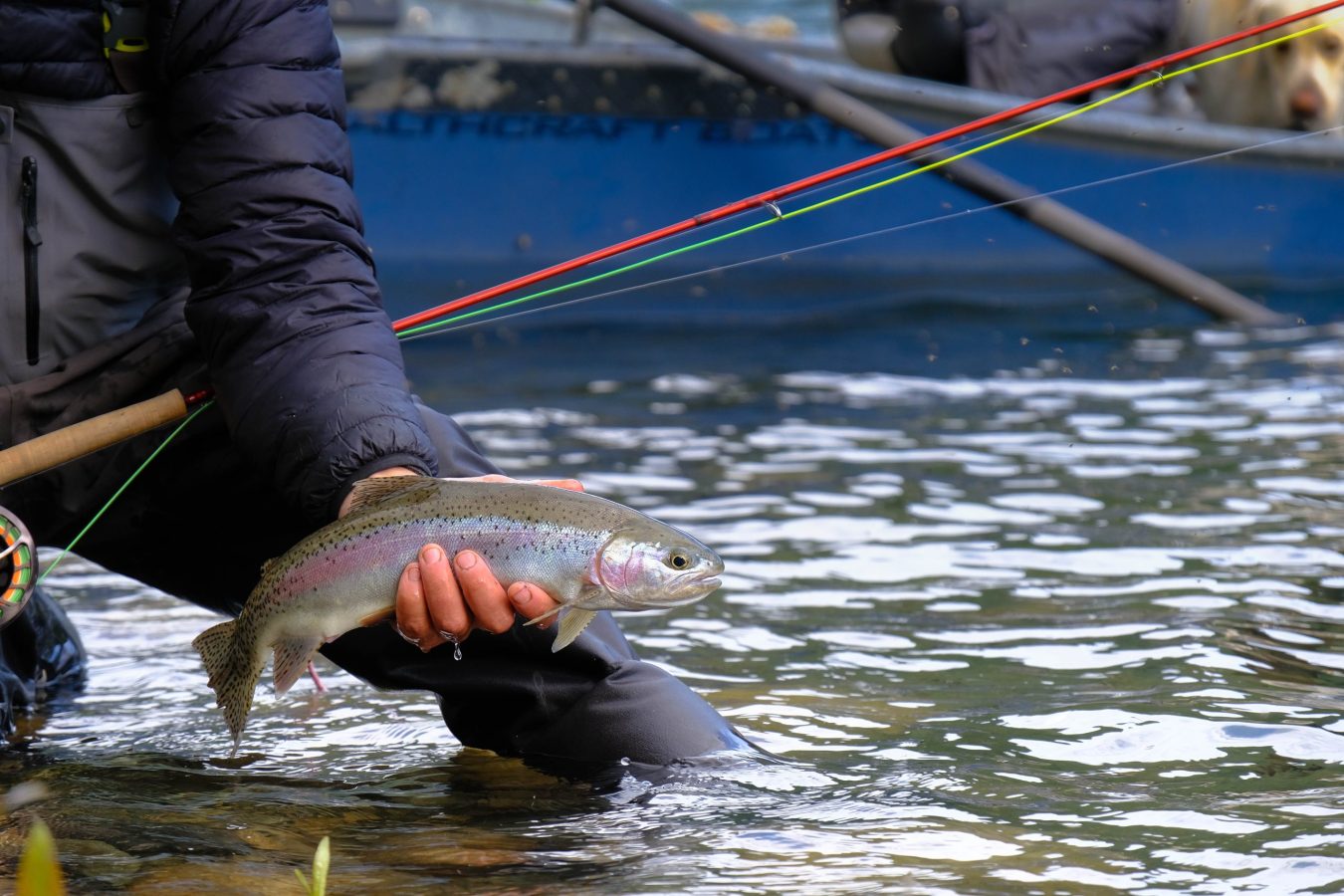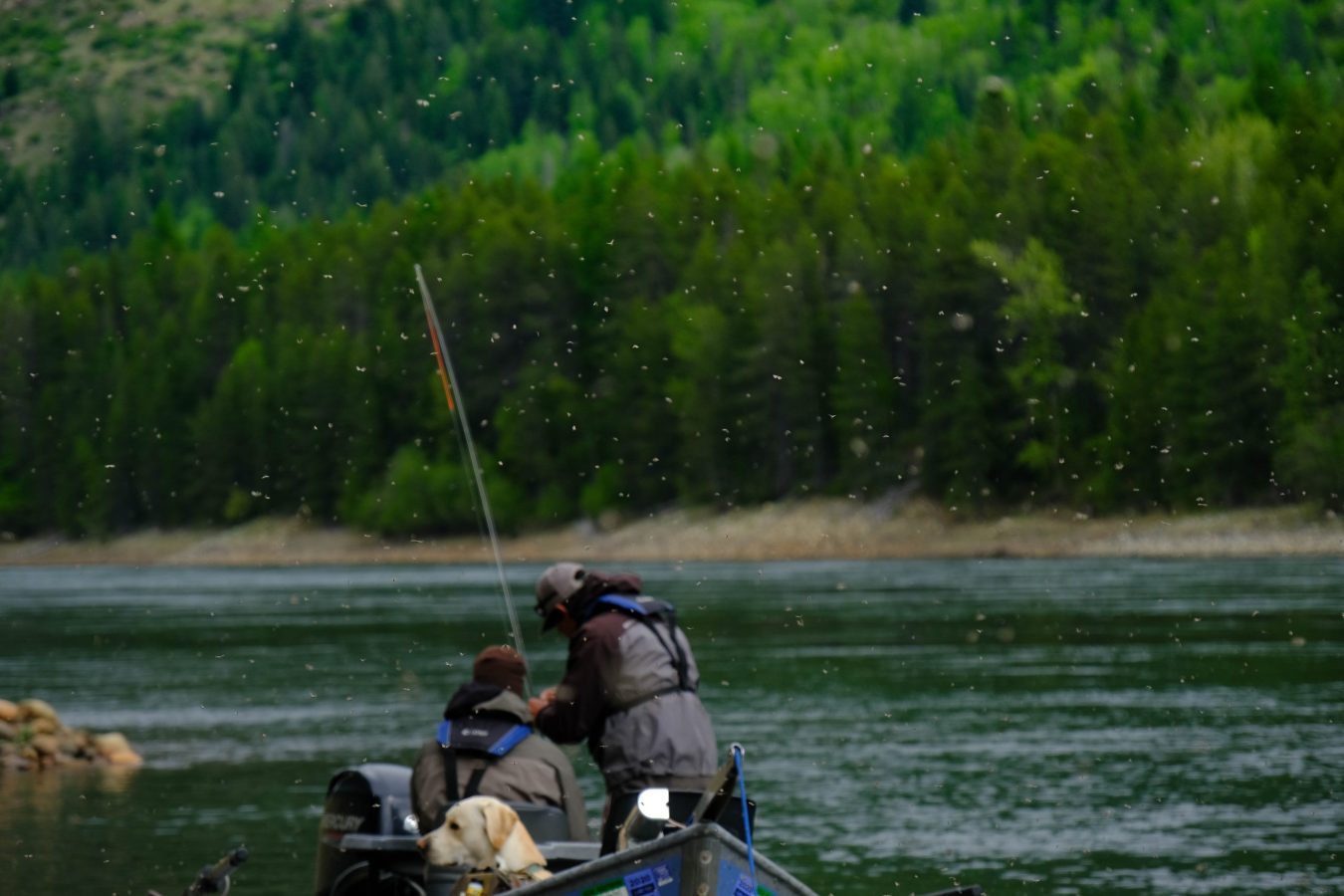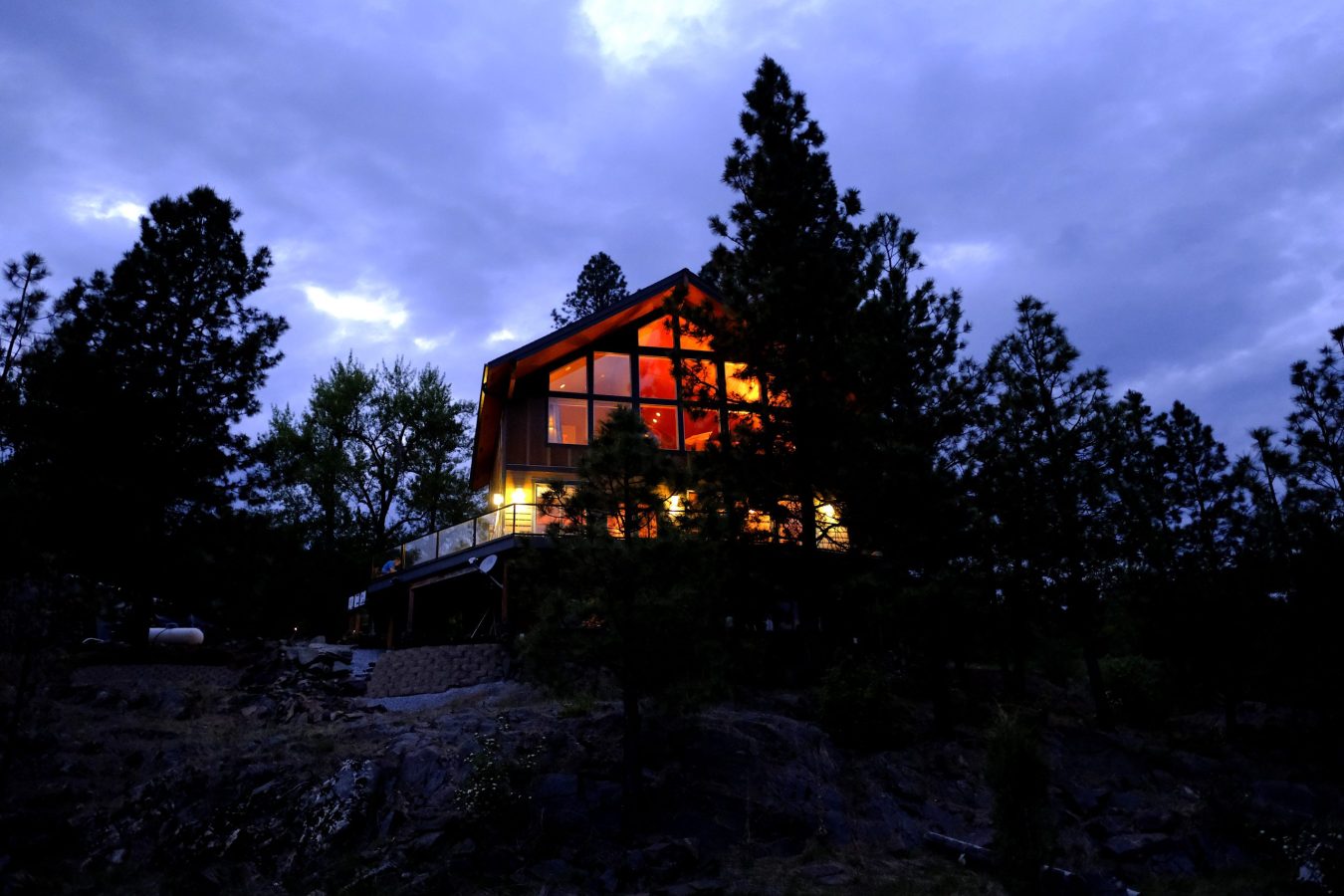Washington’s Heavy-Water Rainbows

Big, high-jumping rainbows on a remote section of the Pacific Northwest’s most legendary river are just a few steps away at Black Bear Lodge
Washington state’s Upper Columbia River landed on the fly-fishing landscape a couple decades ago, and the first man on the spot was Jack Mitchell. Mitchell is well established in the Evergreen State, having built his empire on the Yakima River and other locales including the Klickitat River and the Olympic Peninsula. But he’s never been one to stand still. He’s always looking for more—more killer fishing, more emerging fisheries, and the places to offer great trips and accommodation. What he found on the upper Columbia was a somewhat overlooked trout fishery with some big rainbow trout included in the mix. In addition, the massive Columbia, flowing out of Canada and into northeastern Washington—about two hours north of Spokane—offered stellar aquatic insect hatches, trout that fought as hard and leapt as high as any others, and nearly nobody was working the water. I.e., this was an untapped fishery just begging for infrastructure.
Mitchell provided that when he threw down on several acres near Northport and constructed a spectacular four-bedroom lodge just yards from the Columbia. Fact is, you could pitch a rock off the full wrap-around deck and easily hit the water. But why bother when there are fish to catch?
We’ve followed the fishery for several years and in May we hit Black Bear Lodge to fish with Mitchell and see if the ‘bows were as acrobatic as described… and whether this locale has what it takes to pull us away from the Northern Rockies for something, well, kind of unknown.
We did not arrive at prime time for large fish. Most of the bigs, trout ranging between 21 and 26 inches, had bolted up the tributary streams and were in the thick of the spawn. We focused on caddis-scarfing rainbows in the 17 to 20-inch range and caught 15-to 20 a day, mostly on nymphs with a few late-afternoon sippers taking spent caddis and emerging pupa.
It was a bobber and nymph game, all cast from Stealthcraft boats (equipped with jet engines and rowing oars). We fished double nymph rigs, including pupa and emergers, just a foot or two under the surface. We covered giant slicks and current lines formed by massive backflows (“re-circs”) that wound their way around rocky points and then back up the shoreline before returning to the main flow.
This was Mother’s Day caddis time, and the daily insect flights started around noon and really cranked up to a “breathe through your nose” event by 3 p.m. We saw plenty of trout feeding on the surface, but the river’s varied and heavy currents created massive drag on our floating lines and kept our bugs under the surface.
As mentioned, later in the day and into early evening we found some big fish feeding in long runs and slick water and were able to tempt several with spent caddis. It was a great time of the year to be on a remote stretch of river, and the trout were extremely healthy and strong. But I had to think what it might be like if the big boys were feeding on top and we could have hunted them with large dries.

That scenario takes place sometime between late June and the third week in July when size 8 and 10 green drakes come off. The action happens in the afternoon and stretches to 10 p.m., which makes for an interesting fishing schedule. Sleep in. Sip some coffee. Enjoy the Montana-esque views from the lodge’s bay windows or wraparound deck. Have that mimosa if you please (you’re on vacation, right?). And then gear up around 2 p.m. for what Mitchell and his guides consider to be one of the West’s greatest fly-fishing events.
By late June and July all of the big fish are back from the tributaries and trying to gain the strength and weight they lost from the spawn. The green drake is the way to do it and these fish feed casually on the surface. We’re talking some 20-plus-inchers in heavy water, rising to a highly visible dry fly. Getting them to take is not the issue—holding a fish that size in heavy current is.
While the drake hatch is a premiere event, don’t overlook fall and spring fishing. During both seasons anglers can swing streamers off single-hand and trout spey rods, with the potential of landing something huge. During fall the trout key-in on October caddis, which makes swinging pupa and soft-hackles a good way to go. And don’t ignore the dry fly—October caddis adults are large enough to draw the attention of the biggest trout. Picture in your mind an 18 to 22-inch native rainbow rising to that offering. In addition, fall might be the prettiest time of year on the river with the cottonwoods and aspens aglow and elk bugling from the hills. The fall fishery begins in late August and peaks in late September and October.
In the end, we can’t say enough about the upper Columbia’s rainbow trout. They are bug-oriented, they feed actively on the surface, they are as strong as any rainbows we’ve ever encountered, and they take advantage of the big river’s flows to make any size fish a challenge on a 5- or 6-weight rod. Black Bear Lodge rests on an amazing bluff above the river and allows anglers to walk down to an awaiting boat and fish as they please. No drive time. No shuttle. No hassle. Just fun fishing through a beautiful landscape with the chance to catch worthy rainbow trout.
Northport is easy to reach from the West’s major population centers. Anglers can fly to Spokane and rent a car for the beautiful two-hour drive north, or the lodge can provide transportation to and from Spokane for parties of four or more. Max occupancy at the lodge is six guests. So if you don’t feel like driving to and from Montana or the Yellowstone region for high-quality trout fishing, Black Bear should appeal. Want to avoid airlines altogether? Drive time from Seattle is about six hours.












